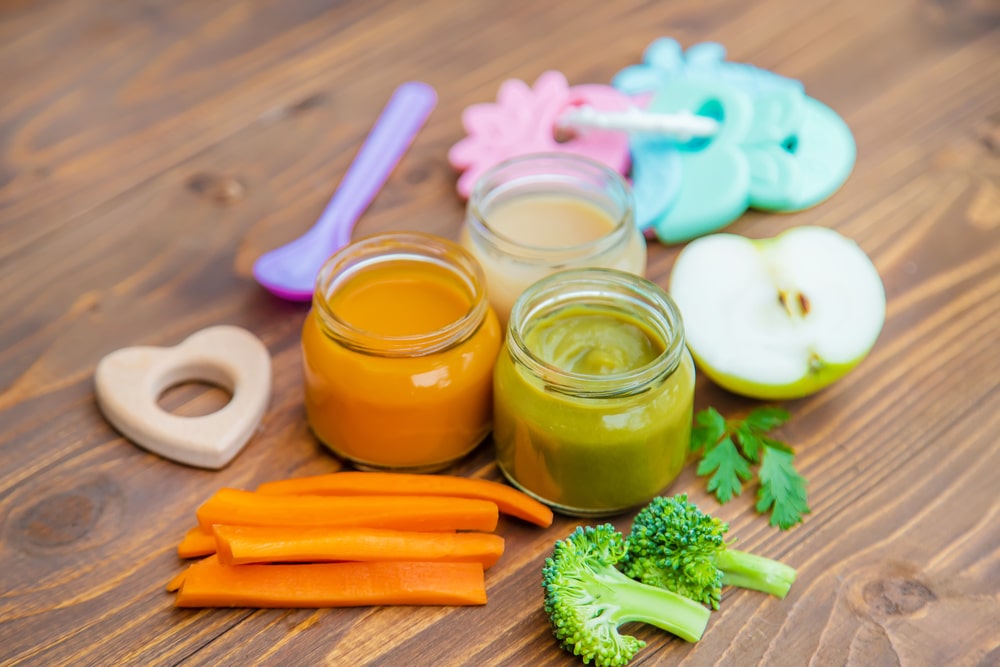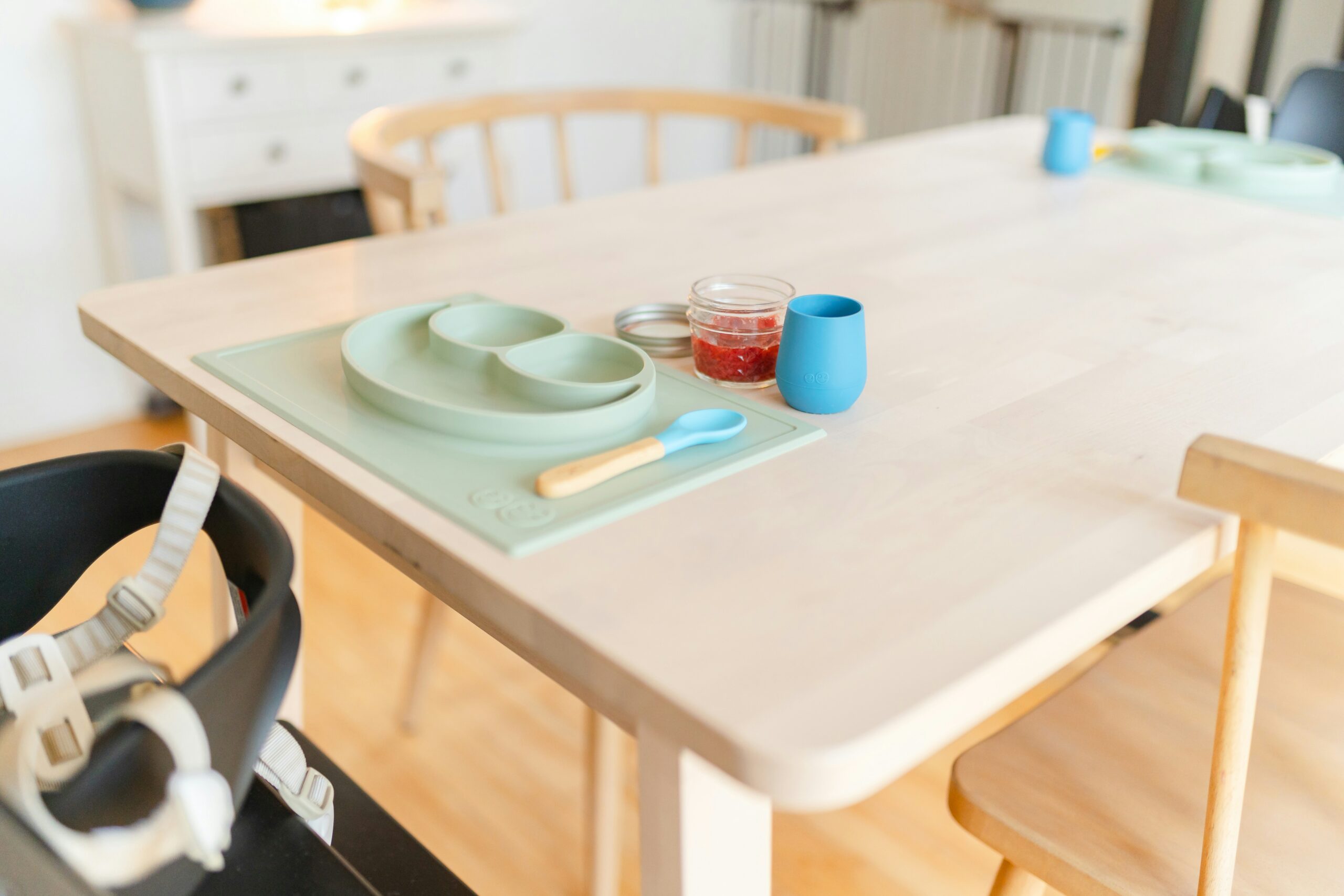Welcome to the heartwarming world of homemade baby food, where the journey of nourishing your little one begins with love, care, and the joy of culinary creation. At Motherhood Center in Houston, Texas, we understand the profound impact that nutrition has on your child’s growth and development. In this guide, we embark on a delightful exploration of how to make homemade baby food—an art that goes beyond the kitchen, fostering a connection between parents and their precious bundles of joy.
As parents, we recognize the significance of laying a strong foundation for healthy eating habits from the very start. Homemade baby food is not just about providing essential nutrients; it’s an opportunity to tailor flavors to your baby’s unique palate and instill a love for wholesome, homemade goodness. Join us on this enriching journey as we share expert tips and tricks, empowering you to create nutritious, delicious meals that will become cherished memories in your baby’s developmental milestones. The joy of crafting your baby’s first meals is a celebration of parenthood, and at Motherhood Center, we’re honored to guide you every step of the way.
Benefits of Homemade Baby Food
Embarking on the journey of making homemade baby food offers a plethora of benefits that extend far beyond the convenience of store-bought options. At Motherhood Center in Houston, Texas, we believe in empowering parents with the knowledge and tools to provide the best nutrition for their little ones. Let’s delve into the compelling advantages of choosing homemade over commercial alternatives.
Nutrient-Packed Goodness
When you prepare baby food at home, you have direct control over the quality and freshness of ingredients. This translates to a higher concentration of essential nutrients that might diminish in processed alternatives. Fresh fruits, vegetables, and grains retain their natural goodness, offering a nutrient-packed meal that caters specifically to your baby’s developmental needs. The absence of preservatives and additives ensures a pure and wholesome start to your baby’s culinary journey, promoting optimal health and growth.
Tailoring Flavors
Babies, like adults, have distinct taste preferences, and homemade baby food allows you to customize meals based on your little one’s evolving palate. From introducing a variety of vegetables to experimenting with different fruits, the possibilities are endless. This not only encourages a love for diverse flavors but also lays the foundation for a varied and nutritious diet as your baby grows. The sensory experience of tasting different homemade foods contributes to the development of a positive attitude towards mealtime, fostering a healthy relationship with food from the very beginning.
Cost-Effective and Eco-Friendly
Beyond nutritional advantages, making baby food at home proves to be cost-effective and environmentally conscious. Purchasing fresh, seasonal produce in bulk often comes at a lower cost than buying individual jars of baby food. Additionally, reducing the reliance on pre-packaged options minimizes plastic waste, aligning with a sustainable parenting approach. By embracing homemade baby food, you not only save on expenses but also contribute to a healthier planet for the future your little one is growing into.
Essential Tools and Equipment
As you venture into the world of preparing homemade baby food, having the right tools and equipment on hand is crucial for a seamless and enjoyable cooking experience. Let’s explore the essential tools and equipment that will transform your kitchen into a haven for crafting nutritious meals for your little one.
Must-Have Kitchen Gear for Effortless Baby Food Preparation
Investing in the right kitchen tools simplifies the process of making homemade baby food. A reliable blender or food processor takes the spotlight, as it helps achieve the desired smooth texture for purees and blends. Look for models with varying speed settings to cater to different food consistencies as your baby progresses from simple purees to more textured meals. Additionally, a set of silicone ice cube trays proves invaluable for portioning and freezing baby food, allowing you to prepare meals in advance and conveniently pop out servings as needed.
Choosing the Right Blender
Selecting the appropriate blender is a critical decision in ensuring the success of your homemade baby food endeavors. Opt for a blender with a strong motor and sharp blades that can effortlessly process a variety of ingredients. Consider features like easy-to-clean designs and dishwasher-safe components, simplifying the post-cooking cleanup. By investing in a quality blender, you not only save time but also guarantee a consistent and smooth texture in your baby’s meals, making the transition to solid foods a delightful experience for both you and your little one.
Storage Solutions
Effective storage solutions play a pivotal role in maintaining the freshness and nutritional value of homemade baby food. BPA-free, airtight containers are ideal for refrigerating or freezing portions, allowing you to prepare larger batches and store them for future use. Labeling containers with the date ensures you use the oldest meals first, minimizing waste. As you stock up on these essential tools, you’re not just creating a well-equipped kitchen; you’re setting the stage for a stress-free and enjoyable journey into homemade baby food preparation.
Selecting the Best Ingredients
At the heart of crafting wholesome homemade baby food lies the careful selection of fresh and nutritious ingredients. Let’s delve into the art of selecting the best ingredients for your homemade baby food, ensuring a culinary journey that nourishes both body and soul.
Organic vs. Conventional
One of the key decisions in selecting ingredients for homemade baby food is whether to opt for organic or conventional produce. While both options can contribute to a nutritious diet, organic choices often minimize exposure to pesticides and chemicals. Consider prioritizing organic selections for the “Dirty Dozen,” a list of produce with higher pesticide residues, while being more lenient with the “Clean Fifteen.” This thoughtful approach allows you to provide your baby with the best of both worlds—nutrient-rich ingredients while being mindful of potential contaminants.
Seasonal Produce
Embracing seasonal produce is not only a culinary delight but also a smart strategy for maximizing flavor and nutritional value. Seasonal fruits and vegetables are at their peak freshness, offering a vibrant spectrum of nutrients and flavors that can elevate your baby’s meals. Explore local farmers’ markets or join a community-supported agriculture (CSA) program to access a diverse array of seasonal ingredients. Introducing your baby to a variety of flavors from different seasons not only contributes to a well-rounded diet but also exposes them to the wonders of nature’s ever-changing bounty.
Introducing Proteins and Grains
As your baby transitions to more complex foods, introducing proteins and grains becomes a crucial step in diversifying their diet. Lean proteins, such as poultry, fish, and legumes, provide essential amino acids necessary for growth. Similarly, incorporating whole grains like quinoa, brown rice, and oats adds fiber and valuable nutrients. Pay attention to your baby’s reactions to new ingredients, and gradually expand their culinary horizons. By introducing a diverse range of ingredients, you’re not just creating meals; you’re cultivating a palate that appreciates the richness of different food groups, setting the stage for a lifetime of healthy eating habits.
Cooking Methods for Optimal Nutrition
In the journey of preparing homemade baby food, cooking methods are pivotal for preserving nutrients. Let’s explore the art of cooking for your baby, ensuring each meal is a perfect blend of taste and nourishment.
Steaming and Roasting
Steaming and roasting are champions for preserving nutrients in homemade baby food. Steaming maintains natural flavors and essential vitamins, softening textures for easy consumption. Roasting enhances vegetable sweetness without added sugars or salts. These methods introduce natural flavors, setting the stage for a lifetime of healthy eating.
Boiling and Baking
Boiling and baking strike a balance between flavor and texture. Boiling is ideal for digestion-friendly solid foods, minimizing water use to retain nutrients. Baking locks in moisture, creating mild sweetness for fruits and vegetables. Incorporating varied methods introduces textures and tastes, making mealtimes delightful.
Avoiding Pitfalls
Mindful cooking prevents common pitfalls like overcooking and nutrient loss. Vigilance in cooking times preserves vibrant colors and nutritional integrity. Be attentive in the kitchen to guarantee each meal is a nutrient powerhouse for your baby’s overall health.
Age-Appropriate Textures and Consistencies
Navigating the transition from purees to more textured foods is a crucial phase in your baby’s culinary journey. At Motherhood Center in Houston, Texas, we recognize the significance of introducing age-appropriate textures and consistencies to support your little one’s developmental milestones. Let’s delve into the art of adapting food textures for your baby, ensuring each bite is a step towards a confident and enjoyable feeding experience.
Transitioning from Purees to Soft Solids
As your baby progresses in their culinary adventure, transitioning from smooth purees to soft solids is a key step. Begin by introducing mashed or finely chopped fruits and vegetables, allowing your baby to experience a variety of textures. This gradual shift not only aids in developing oral motor skills but also exposes your little one to the diverse sensations of different foods. Pay attention to your baby’s cues and preferences during this exciting phase, fostering a positive relationship with food. Consider Motherhood Center’s classes on introducing solids for valuable insights, empowering you to make informed decisions about your baby’s evolving texture preferences.
Encouraging Self-Feeding
Encouraging self-feeding is a milestone that brings joy to both parents and babies. Introduce bite-sized finger foods that are easy for your little one to grasp, promoting independence during mealtimes. Soft fruits, cooked vegetables, and small portions of pasta are excellent choices. This hands-on approach not only enhances fine motor skills but also fosters a sense of exploration and autonomy. Embrace the messiness of this stage as your baby discovers the sensory delight of touching, feeling, and tasting different textures.
Texture Progression Chart
Creating a texture progression chart can be a helpful tool in navigating the world of age-appropriate textures. Outline the gradual introduction of different consistencies, from purees to soft lumps and eventually to finely chopped or minced foods. This chart serves as a reference guide, ensuring that you align your baby’s meals with their developmental readiness. By understanding and adapting to your baby’s evolving texture preferences, you’re not just providing nourishment; you’re cultivating a positive and enjoyable relationship with food that will last a lifetime.
Introducing Allergenic Foods Safely
The introduction of allergenic foods is a crucial aspect of your baby’s culinary exploration. At Motherhood Center in Houston, Texas, we recognize the importance of safely incorporating potentially allergenic foods into your little one’s diet. Let’s delve into the guidelines for introducing allergenic foods, ensuring a safe and informed approach to this significant phase of your baby’s nutritional journey.
Navigating the World of Allergies
Before introducing allergenic foods, it’s essential to be aware of common culprits. Foods like peanuts, tree nuts, dairy, eggs, soy, wheat, and fish are potential allergens. Keep a keen eye on your baby’s reactions and consult with healthcare professionals if you have concerns about specific allergies.
The Importance of Gradual Introduction
A gradual introduction of allergenic foods is key to mitigating potential risks. Start with small, diluted amounts and observe your baby for any adverse reactions. Introduce one allergenic food at a time, allowing several days between each new introduction. This cautious approach helps identify and manage any potential allergic responses.
Signs of Allergic Reactions
Understanding the signs of allergic reactions is crucial for parents introducing allergenic foods. Watch for symptoms such as hives, swelling, vomiting, diarrhea, or difficulty breathing. If you notice any concerning signs, seek immediate medical attention. With informed decisions and careful observation, you can create a positive and safe experience, setting the foundation for a lifetime of healthy eating habits.
Creating Flavorful Combinations
Elevating your baby’s culinary experience goes beyond basic nutrition—it’s about introducing a symphony of flavors that spark joy and curiosity. Let’s explore the art of crafting flavorful combinations that not only nourish but also engage your little one’s developing palate, making mealtime an exciting exploration of tastes and textures.
Exploring Complementary Flavors
As you venture into creating flavorful combinations for your baby, consider the art of exploring complementary flavors. Combining sweet and savory elements not only introduces variety but also stimulates your baby’s taste buds. Mix pureed sweet potatoes with a hint of cinnamon or pair apples with mild spices. These thoughtful combinations expose your little one to a diverse range of tastes, laying the foundation for a more adventurous palate in the future.
Seasonal Recipes
Embracing seasonal produce is a delightful way to inspire creativity in crafting flavorful combinations. Seasonal fruits and vegetables offer a spectrum of tastes, from the freshness of spring berries to the warmth of autumn squash. Utilize the bounty of each season to create unique blends that captivate your baby’s senses. Seasonal recipes not only maximize nutritional benefits but also provide an ever-changing menu that keeps mealtime exciting and enjoyable.
Combining Food Groups
In the pursuit of creating flavorful combinations, consider combining different food groups to ensure a well-rounded and balanced diet for your baby. Introduce combinations that include fruits, vegetables, proteins, and grains. For example, mix pureed peas with quinoa or blend avocados with bananas for a nutritious and satisfying meal. This approach not only broadens your baby’s palate but also provides a diverse array of essential nutrients necessary for their growth and development. Embark on this flavorful journey, offering resources and guidance to make mealtime a delightful and nourishing experience for both you and your baby.
Troubleshooting and Tips
Embarking on the journey of preparing homemade baby food is a rewarding experience, but like any adventure, it may come with its challenges. In this section, we’ll address troubleshooting common issues and share valuable tips to ensure a smooth and enjoyable process for both you and your little one.
Dealing with Picky Eaters
It’s not uncommon for babies to display preferences or develop picky eating habits. If your little one seems hesitant about certain flavors or textures, don’t be discouraged. Instead, approach picky eating with patience and creativity. Experiment with different combinations, gradually introducing new elements to familiar favorites. Providing a variety of options and allowing your baby to explore and express their preferences can turn mealtimes into a positive and enjoyable experience.
Storage Tips for Busy Parents
For busy parents, efficient storage of homemade baby food is essential. Consider preparing larger batches and utilizing airtight containers or silicone ice cube trays for portioning. Freezing small portions allows you to have ready-made meals, reducing daily preparation time. When thawing, opt for the refrigerator or use a gentle steam method to retain the nutritional value of the food. These storage tips not only save time but also ensure that your baby consistently enjoys fresh and wholesome meals.
Maintaining a Consistent Feeding Schedule
Establishing a consistent feeding schedule is beneficial for both you and your baby. Consistency helps regulate your baby’s hunger and supports their overall development. Create a routine that aligns with your baby’s natural rhythm, offering meals at similar times each day. This regularity not only fosters healthy eating habits but also provides a sense of security and predictability for your little one. As you navigate the world of homemade baby food, remember that each baby is unique, and troubleshooting challenges with patience and adaptability will contribute to a positive and fulfilling feeding experience.
Conclusion
As we conclude this exploration into the art of preparing homemade baby food, it’s evident that nourishing your little one is not just a culinary task but a journey of love, creativity, and developmental milestones. From the benefits of homemade baby food, essential tools, and equipment, to age-appropriate textures and the introduction of allergenic foods, we’ve covered a spectrum of insights to empower you on this exciting path.
Remember the importance of choosing the best ingredients, exploring complementary flavors, and embracing seasonal produce to create a diverse and nutritious menu for your baby. The troubleshooting tips provided offer solutions for common challenges, ensuring a positive and enjoyable feeding experience.
In your pursuit of crafting delightful and wholesome meals, consider seeking additional guidance and support. Motherhood Center in Houston, Texas, is here to assist you on this journey. Our classes, resources, and expert advice can provide further insights, fostering confidence and joy at mealtime. Contact Motherhood Center today and let us be a part of this beautiful chapter in your parenting adventure. Together, we can nurture not just healthy eating habits but a lifetime of shared moments and culinary delights with your precious little one.
FAQs
When should I start introducing solid foods to my baby, and can Motherhood Center help?
Solid foods are typically introduced around six months of age when your baby shows signs of readiness. Motherhood Center in Houston, Texas, offers specialized classes on introducing solids, providing valuable insights and guidance.
How can I ensure my baby gets a variety of nutrients with homemade baby food?
Ensure a balanced diet by incorporating a mix of fruits, vegetables, proteins, and grains. Rotate ingredients to provide a diverse range of nutrients.
Are there specific foods I should avoid when introducing allergenic foods to my baby?
Be cautious with common allergens like peanuts, tree nuts, dairy, eggs, soy, wheat, and fish. Introduce one allergen at a time and monitor for any adverse reactions.
What cooking methods are best for preserving nutrients in homemade baby food?
Steaming and roasting are ideal for preserving nutrients. These methods maintain the natural flavors and essential vitamins in fruits and vegetables.
How can I encourage my baby to try new textures and flavors?
Gradually introduce textures, from purees to soft solids. Explore complementary flavors, and be patient with picky eating habits. Encourage self-feeding with bite-sized finger foods for a hands-on experience.







